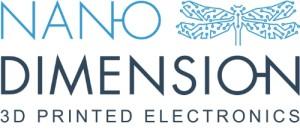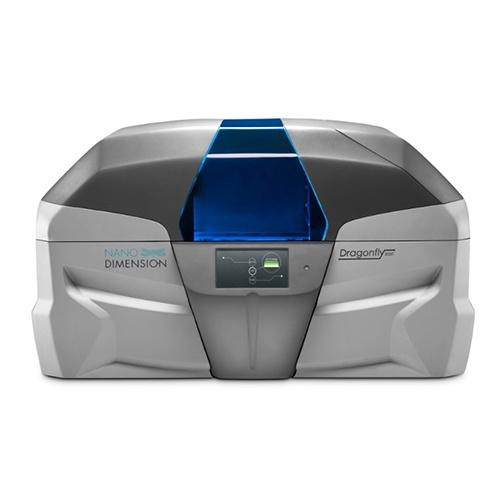 It seems as though we’ve been anticipating the official release of Nano Dimension’s electronic circuit board 3D printer, the DragonFly 2020, for a long time. The Israeli company announced that they had received a grant to develop the printer towards the end of 2014, and we’ve been following its development ever since then as Nano Dimension works to perfect the groundbreaking machine and release it to the general public. The company has already sent the printer to six beta customers over the course of 2016, and so far we’ve heard nothing but great things from the recipients.
It seems as though we’ve been anticipating the official release of Nano Dimension’s electronic circuit board 3D printer, the DragonFly 2020, for a long time. The Israeli company announced that they had received a grant to develop the printer towards the end of 2014, and we’ve been following its development ever since then as Nano Dimension works to perfect the groundbreaking machine and release it to the general public. The company has already sent the printer to six beta customers over the course of 2016, and so far we’ve heard nothing but great things from the recipients.
 We’ve gotten to see the DragonFly 2020 in person on two separate occasions, and we’ll be seeing Nano Dimension again this week at SOLIDWORKS World 2017. As the conference kicks off, Nano Dimension has some big news about their next project. The company’s innovative work won’t stop after the release of the DragonFly 2020; thanks to a new grant from the Israel Innovation Authority, they’re about to move into a new area of development: 3D printed ceramic components for the aerospace and aviation sectors.
We’ve gotten to see the DragonFly 2020 in person on two separate occasions, and we’ll be seeing Nano Dimension again this week at SOLIDWORKS World 2017. As the conference kicks off, Nano Dimension has some big news about their next project. The company’s innovative work won’t stop after the release of the DragonFly 2020; thanks to a new grant from the Israel Innovation Authority, they’re about to move into a new area of development: 3D printed ceramic components for the aerospace and aviation sectors.
The Israel Innovation Authority’s MEIMAD committee, a joint venture between the Innovation Authority, the Ministry of Finance, and the Administration for the Development of Weapons and Technological Infrastructure of the Ministry of Defense, has approved a budget of NIS 1.4 million (about $372,000) for the project, which will involve the development of inkjet 3D printing technology for advanced ceramic materials. Ceramics are ideal for aerospace components because of their mechanical strength and high thermal resistance, but ceramic parts are expensive and time-consuming to produce, plus they don’t lend themselves to the creation of complex structures with current production methods.
All of that changes when 3D printing is brought into the equation. 3D printed ceramics are fairly new, and ceramic inkjet printing even more so. In November, XJet announced that they had developed a brand new ceramic 3D printing technology based on their pioneering NanoParticle Jetting metal 3D printing technology. The introduction of their ceramic inkjet printing method was big news, as it’s completely different from the typical extrusion-based ceramic printers we’ve seen so far.
So what will Nano Dimension’s ceramic inkjet process look like? That remains to be seen, of course, but the technology that makes the inkjet-based DragonFly 2020 so effective for electronics has great potential for ceramic materials. The DragonFly’s multimaterial capabilities, speed, and high printing resolution are just a few of the highlights that make the technology ideal for adaptation to ceramics – and, in fact, ceramics can be used as a dielectric material in 3D printed PCBs, further improving them, as the insulation and mechanical strength properties of ceramic are much better than those of the materials currently used in the PCB industry.
The benefits of ceramics go beyond their aforementioned characteristics: they also stand out for their elasticity, plasticity, shear strength, tensile strength, compressive strength, and more, making them ideal for the manufacture of everything from structural and building materials to textiles. It’s not surprising that the aerospace industry has taken such an interest in 3D printed ceramics, and MEIMAD is wise to capitalize on the technology through the expertise of Nano Dimension. The Israel Innovation Authority will be financing 50% of the total budget for the project, with the agreement that Nano Dimension will pay royalties on any future sales of the funded technology.
MEIMAD’s goal is to promote advanced dual-use technologies for military, defense, and commercial research and development purposes, bolstering both national security and financial profit at the same time. Discuss in the Nano Dimension forum at 3DPB.com.
Subscribe to Our Email Newsletter
Stay up-to-date on all the latest news from the 3D printing industry and receive information and offers from third party vendors.
You May Also Like
IperionX Inks 10-Year Deal with Wisconsin Manufacturer for 80 Metric Tons of Titanium Per Year
IperionX, the Charlotte-based supplier of sustainable titanium powders used for additive manufacturing (AM) and metal injection molding (MIM), has signed a ten-year deal with United Stars, a group of industrial...
Gastronology Launches Industrial Production of 3D Printed Food for Dysphagia Patients
Food 3D printing has, in many ways, been an additive manufacturing (AM) segment looking for the right business case. While some applications are beautiful and others may or may not...
Lockheed Martin Leads $3M Investment in Q5D’s Electronics 3D Printing System
Q5D, an original equipment manufacturer (OEM) of robotic arm, hybrid additive manufacturing (AM) systems used for wire harness production, has closed a $3 million investment round. The investment arm of...
3D Printing News Briefs, April 6, 2024: Depowdering, Cybertruck Door Handles, & More
In today’s 3D Printing News Briefs, ioTech’s digital manufacturing CLAD technology is opening up opportunities for microelectronics and additive manufacturing. Hexagon and Raytheon Technologies commercially released the Simufact Additive Process...
































